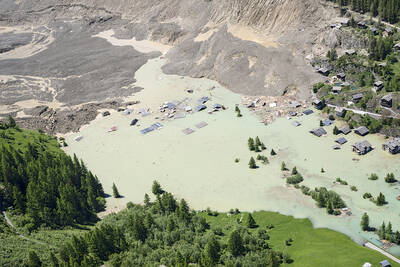Researchers studying the various dialects of Japanese have concluded that all are descended from a founding language taken to the Japanese islands about 2,200 years ago. The finding sheds new light on the origin of the Japanese, suggesting that their language is descended from that of the rice-growing farmers who arrived from the Korean Peninsula, and not from the hunter-gatherers who first inhabited the islands about 30,000 years ago.
The result provides support for a wider picture, controversial among linguists, that the distribution of many language families today reflects the spread of agriculture in the distant past when farming populations, carrying their languages with them, grew in numbers and expanded at the expense of hunter-gatherers. Under this theory, the Indo-European family of languages, which includes English, was spread by the first farmers who expanded into Europe from the Middle East about 8,000 years ago, largely replacing the existing population of hunter-gatherers.
For Japan, archeologists have found evidence for two waves of migrants, a hunter-gatherer people who created the Jomon culture and wet rice farmers who left remains known as the Yayoi culture.
The Jomon people arrived in Japan before the end of the last ice age, crossing by land bridges that then joined Japan both in the north and south to Asia’s mainland. They fended off invaders until about 2,400 years ago, when the wet rice agriculture developed in southern China was adapted to the colder climate of Korea.
Several languages seem to have been spoken on the Korean Peninsula at this time, and that of the Yayoi people is unknown.
The work of two researchers at the University of Tokyo, Sean Lee and Toshikazu Hasegawa, now suggests that the origin of Japonic — the language family that includes Japanese and Ryukyuan — coincides with the arrival of the Yayoi people.
The finding, if confirmed, indicates that the Yayoi people took Japonic to Japan, but leaves still unresolved the question of where in Asia the Yayoi culture or Japonic language originated before arriving in the Korean Peninsula.
Lee is a graduate student studying language and the mind, not a historical linguist. He has used a statistical tree-drawing method that other biologists have applied successfully to language origins, despite some linguists’ skepticism. The method, called Bayesian phylogeny, depends on having a computer draw a large number of possible trees — in this case 120 million — and sampling them to find the most probable. Each language is represented by a 200-word vocabulary composed of words known to change very slowly.
If any fork in the tree can be linked to a historical event, all the other branch points can be dated. In this case, Lee knew dates for Old Japanese, Middle Japanese and the split between the Kyoto and Tokyo dialects that began in 1603, when the capital was moved from Kyoto to Edo (Tokyo).
Lee reasoned that Japanese would have originated with the Jomon if the root of the tree turned out to be very ancient, but with the Yayoi culture if recent. The computer’s date of 2,182 years ago for the origin of the tree fits reasonably well with the archaeological dates for the Yayoi culture, he reported on Tuesday in The Proceedings of the Royal Society.

The collapse of the Swiss Birch glacier serves as a chilling warning of the escalating dangers faced by communities worldwide living under the shadow of fragile ice, particularly in Asia, experts said. Footage of the collapse on Wednesday showed a huge cloud of ice and rubble hurtling down the mountainside into the hamlet of Blatten. Swiss Development Cooperation disaster risk reduction adviser Ali Neumann said that while the role of climate change in the case of Blatten “still needs to be investigated,” the wider impacts were clear on the cryosphere — the part of the world covered by frozen water. “Climate change and

Poland is set to hold a presidential runoff election today between two candidates offering starkly different visions for the country’s future. The winner would succeed Polish President Andrzej Duda, a conservative who is finishing his second and final term. The outcome would determine whether Poland embraces a nationalist populist trajectory or pivots more fully toward liberal, pro-European policies. An exit poll by Ipsos would be released when polls close today at 9pm local time, with a margin of error of plus or minus 2 percentage points. Final results are expected tomorrow. Whoever wins can be expected to either help or hinder the

DENIAL: Musk said that the ‘New York Times was lying their ass off,’ after it reported he used so much drugs that he developed bladder problems Elon Musk on Saturday denied a report that he used ketamine and other drugs extensively last year on the US presidential campaign trail. The New York Times on Friday reported that the billionaire adviser to US President Donald Trump used so much ketamine, a powerful anesthetic, that he developed bladder problems. The newspaper said the world’s richest person also took ecstasy and mushrooms, and traveled with a pill box last year, adding that it was not known whether Musk also took drugs while heading the so-called US Department of Government Efficiency (DOGE) after Trump took power in January. In a

IMBALANCE: In Vietnam, a preference for boys has caused the sex ratio at birth to be 112 boys for every 100 girls, despite penalties for gender selection The number of births in Japan last year fell for the ninth consecutive year, reaching another historical low of fewer than 700,000, government data showed yesterday, as Vietnam, which is also battling to reverse a declining birthrate, scrapped its long-standing policy of limiting families to two children. Fast-aging Japan welcomed 686,061 newborns last year — 41,227 fewer than in 2023, Japanese Ministry of Health, Labour and Welfare data showed. It was the lowest figure since records began in 1899. Japanese Prime Minister Shigeru Ishiba has called the situation a “quiet emergency,” pledging family friendly measures such as more flexible working hours to